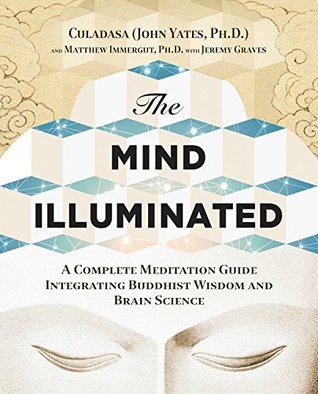More on this book
Community
Kindle Notes & Highlights
Read between
December 11, 2015 - April 16, 2017
As with the other phenomena we’ve discussed, it’s possible these energy currents indicate a functional reorganization taking place inside the brain. Once this reorganization is complete and the mind is sufficiently unified, you experience physical pliancy, meditative joy, and the “blisses” of physical and mental pliancy.
Anicca in Pali, anitya in Sanskrit.
This is one of the Three Characteristics of existence (tilakkhaṇa in Pali, trilakṣaṇa in Sanskrit), Insight into which leads to Awakening
Close following can also be d...
This highlight has been truncated due to consecutive passage length restrictions.
“Meditation on Imper...
This highlight has been truncated due to consecutive passage length restrictions.
Suññatā in Pali, Śūnyatā in Sanskrit. The experience described here specifically provides Insight into the fact that the perceived nature of the objects of phenomenal experience is imposed by the mind, and that these perceived objects are empty of any self-nature—are not, in other words, what they appear to be.
Insight into the emptiness of the personal Self (anattā in Pali, anātman in Sanskrit).
“direct experience of emptiness” (Nibbāna in Pali, Nirvāṇa in Sanskrit). Nibbāna/Nirvāṇa occurs when the mind completely stops projecting anything into consciousness, yet sub-minds of the mind-system remain fully tuned into consciousness.
Consciousness is the process of information exchange between unconscious sub-minds, so some might question how there can possibly be “consciousness without an object.” How can there be an information exchange without any information? Strictly speaking, this is true, and consciousness must always be “consciousness of” something. However, there are two components to the process of consciousness: the object of consciousness, or information to be exchanged; and that which is conscious, or the recipient of the information. With cessation, the first is completely lacking, but the second is still
...more
This highlight has been truncated due to consecutive passage length restrictions.
This exceedingly rare cessation event is traditionally said to be only possible for non-returners (anāgāmi) and Buddhas (arahants) who achieve cessation through jhāna
patibhāga nimitta or “mental counterpart appearance.”
“anti-reflexivity principle”
“The world is all that is the case.”
parikamma nimitta,
“initial appearance;”
uggaha ni...
This highlight has been truncated due to consecutive passage length restrictions.
“acquired appe...
This highlight has been truncated due to consecutive passage length restrictions.
patibhāga n...
This highlight has been truncated due to consecutive passage length restrictions.
“mental count...
This highlight has been truncated due to consecutive passage length restrictions.
The Jhānas 1. The word samādhi is used in close association with jhāna. Samādhi derives from sam-a-dha, meaning “to collect or bring together.” Often translated into English as concentration, samādhi specifically suggests the process of unifying the mind through the practice of focusing attention. The term, therefore, has a broader scope of meaning than jhāna. It includes both jhāna in the more specific sense (called apannāsamādhi), as well as all the many different levels of “bringing together” (concentration) preceding them (known as parikamma and upacārasamādhi).Another closely related word
...more
homophonous
Unification of mind, not exclusive attention, is the truly essential feature of absorption in jhāna.In


